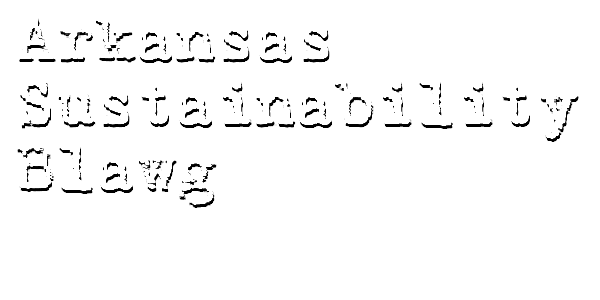HB 1118 goes by the too-long title “Arkansas Central Business Improvement District Rehabilitation and Development Investment Tax Credit Act.” While it is not a sustainalaw per se (it treats all projects the same), it is nonetheless an important addition to the slate of proposed sustainalaws before the Arkansas Legislature.
The proposed Act builds on the Central Business Improvement District Act (found at Ark. Code Ann. § 14-184-101 et seq.), which was designed to assist Arkansas cities in rescuing their deteriorating downtowns by empowering municipalities with more than 500 residents to create central business improvement districts. (For an idea of a central business improvement district, envision the Main Street corridor in Little Rock or Cherry Street in Helena.)
The idea behind HB 1118 is simple: anyone who incurs costs and expenses in connection with a “qualified project” in a previously established central business improvement district is eligible for an income tax credit equal to 20% of up to the first million dollars of “qualified rehabilitation or development expenditures” on the project. The tax credit would be available for five years, from January 1, 2012, to December 31, 2017, and, significantly, the credit may be sold, transferred, or assigned one time.
Lets unpack this a bit. To be a “qualified project,” the property to be rehabilitated or developed must be located in the improvement district, must meet all applicable zoning and building codes, must meet any design and planning guidelines applicable the improvement district, and must involve “qualified rehabilitation or development expenditures” of more than $50,000. The board of commissioners of the improvement district will decide whether a project is a “qualified project”. Adverse decisions the board can be appealed to the “governing body of the municipality.” (If HB 1118 passes, this is one spot where a lawyer will come in handy.)
“Qualified rehabilitation or development expenditures” are defined by what they are not – namely, they are not the cost of acquiring the development property, any associated realtor’s fees, taxes, insurance, costs of landscaping, or sales and marketing costs. Otherwise, “qualified rehabilitation or development expenditures” are, essentially, whatever the improvement district will approve.
If it passes, HB 1118 will give some financial teeth to the Central Business Improvement District. Since that Act's passage, municipalities have been able to offer developers some incentives and special treatment to get them to to downtown projects, but not a $200,000 income tax credit that can be bought and sold.
This is very reason HB 1118 would be important to the Arkansas sustainasphere as an important incentive to green builders and developers. As shown by the currently ongoing revitalization and anticipated LEED-certification of the building located at 315 Main in Little Rock, the aging downtowns of Arkansas cities are loaded with dark and architecturally interesting but neglected buildings that can and should be rescued, repurposed, and greened. This program would empower Arkansas cities to offer a significant financial incentive that will make projects that once looked good only as sketches of sustainability look good on the balance sheet as well.
HB 1118 is not all green skies, of course, and in Part II I will address some practical concerns about the proposed Act.
Stay tuned!

Thanks for sharing information,,,,,,
ReplyDeletemediator hawaii